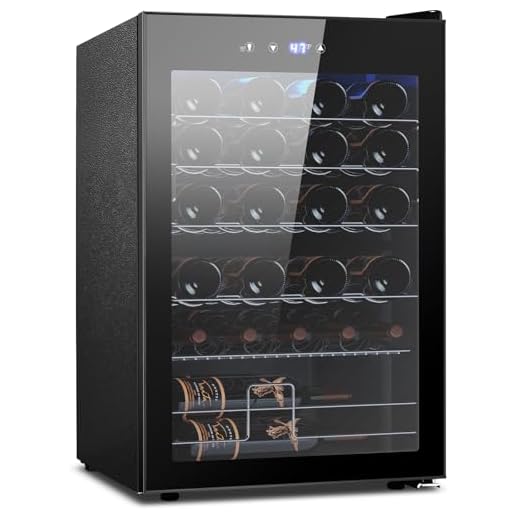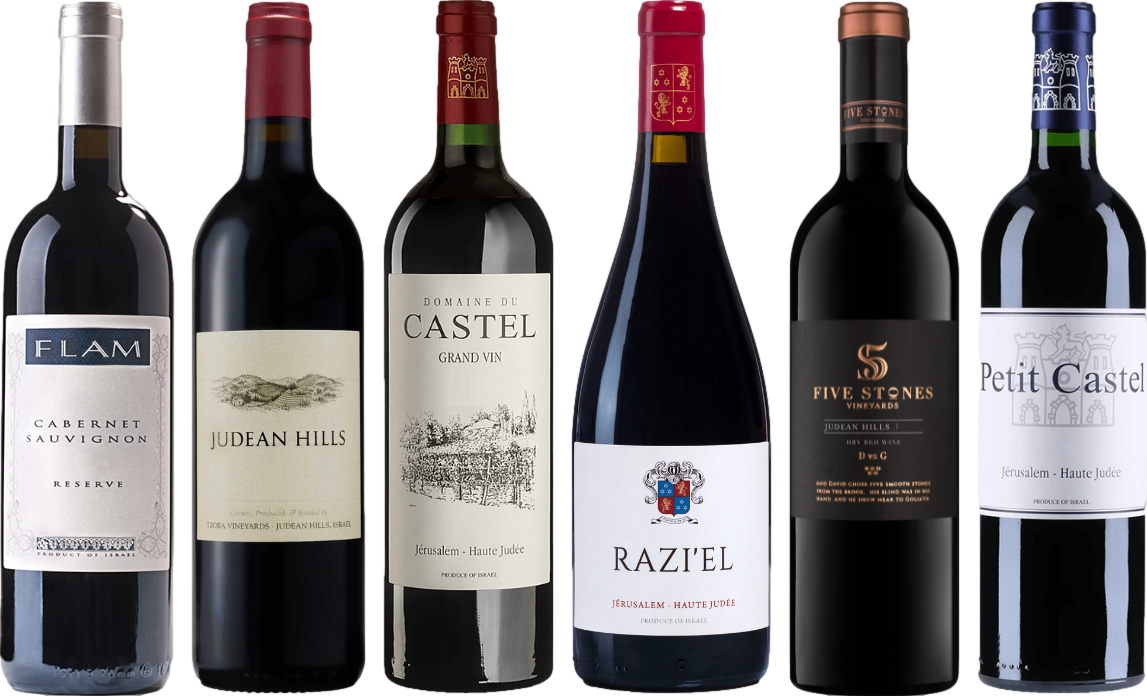



Keeping these deep-hued beverages chilled is not a standard practice, but it can be beneficial under certain circumstances. If a bottle remains unopened, a brief stay in a cooling unit can help maintain optimal temperature for serving. However, extended exposure to cold is not recommended, as it may alter the flavors and aromas.
For those who prefer their drinks slightly cooler, aim for a temperature between 55°F and 65°F. This range highlights the complex profiles of many varieties without compromising their integrity. After opening, if a portion remains, sealing the bottle and placing it in a cooling space can extend enjoyment for a few more days, although some flavors may fade.
Consider the context in which these beverages are served. If the occasion calls for a warmer environment, a brief chill can enhance refreshment. Just remember to allow it some time to return to a more suitable temperature before pouring. Balancing enjoyment and preservation is key to a satisfying experience.
Is Refrigeration Suitable for This Beverage?
Chilling certain varietals can enhance their aromas and flavors, but care must be taken with specific types. Light-bodied options, such as Pinot Noir or Gamay, benefit from a slight coolness, ideally around 55°F (13°C). This temperature allows the fruity notes to shine while maintaining a balanced structure.
Temperature Guidelines
For optimal taste, consider the following:
- Full-bodied selections, like Cabernet Sauvignon or Syrah, prefer a warmer environment, around 65°F (18°C).
- Chilling for a short period before serving can enhance lighter styles, but prolonged exposure to cold may mute complex flavors.
Storage Tips
Avoid long-term storage in a cold environment. Instead:
- Store in a wine cellar or a cool, dark place with stable temperatures.
- If opened, seal the bottle with a cork or stopper before refrigeration to preserve freshness.
- For short-term chilling, place in an ice bath for 10-15 minutes rather than using a regular cooling appliance.
In conclusion, while light-bodied options can be briefly chilled, it’s crucial to maintain awareness of the type to ensure the best tasting experience. Adjust serving temperatures according to the characteristics of the specific varietal for enriched enjoyment.
Understanding the Impact of Temperature on Red Wine
Storing this beverage at optimal temperatures is critical for preserving its flavor profile and aroma. Ideally, a range of 55°F to 65°F (13°C to 18°C) is recommended. Higher temperatures can accelerate aging and lead to the loss of nuanced flavors, while lower temperatures may mute the wine’s characteristics.
When chilled excessively, tannins can become more pronounced, and the overall balance may be disrupted, potentially making it taste harsh. Serving this drink too cold can mask its complexity and prevent the bouquet from fully expressing itself.
If you find yourself needing to cool a bottle swiftly, consider placing it in an ice bucket for 15-20 minutes instead of relying on a cold storage unit. This method allows for a more controlled temperature drop and retains more of the wine’s intended profile.
Temperature fluctuations should also be avoided, as they can negatively impact the aging process. Consistency is key; keeping it in a stable environment will ensure the best flavor development over time.
In conclusion, understanding temperature’s role enhances your enjoyment and appreciation of this complex beverage. Proper care will lead to a more rewarding tasting experience.
Best Practices for Chilling Red Wine in the Fridge
For optimal enjoyment, allow a light-bodied variety to chill for about 30 minutes, while a fuller-bodied selection requires approximately 45 minutes. Always aim for a temperature around 55°F to 60°F, as this range enhances the aromas and flavors without overwhelming the palate.
Wrap the bottle in a damp paper towel before placing it in the cooling unit. This technique accelerates the chilling process, resulting in a more balanced taste experience. Additionally, avoid storing near strong-smelling foods, as these aromas can permeate the cork and affect the beverage’s profile.
| Wine Type | Chilling Time | Ideal Temperature |
|---|---|---|
| Light-bodied | 30 minutes | 55°F – 60°F |
| Medium-bodied | 35-40 minutes | 55°F – 60°F |
| Full-bodied | 45 minutes | 55°F – 60°F |
Rotate bottles occasionally to ensure even cooling. If serving immediately, avoid pouring from a cooler bottle to a warmer glass, as this can rapidly raise the temperature. Instead, pre-chill the glassware to maintain the desired serving temperature longer.
Lastly, take care not to keep any varietal in the cooling unit for extended periods. Prolonged exposure can dull the flavors and aromas, diminishing the overall experience. Aim to consume within a few days of chilling for the best results.
How Long to Chill Red Wine Before Serving
For optimal enjoyment, allow a period of 30 to 60 minutes for cooling prior to serving. This timeframe enables the beverage to reach a temperature that enhances its flavors and aromas.
For lighter varieties, such as Pinot Noir or Gamay, aim for around 30 minutes in a cooling unit. Full-bodied options like Cabernet Sauvignon may require closer to 60 minutes to achieve the right serving temperature.
Utilizing a wine thermometer can provide precise readings, ensuring the desired chill is reached. Ideal serving temperatures typically range from 55°F to 65°F (13°C to 18°C). Adjust your chilling time based on the starting temperature of the bottle and the specific style of the beverage.
For quicker results, consider using an ice bucket filled with a mixture of ice and water. This method can effectively cool a bottle in about 15 to 20 minutes, allowing for a more immediate serving option without sacrificing quality.
Always keep in mind that once served, the temperature will gradually rise, so consider serving slightly cooler than the target range to accommodate for this change.
Common Misconceptions About Refrigerating Red Wine
Many believe that chilling a darker varietal negatively affects its flavor profile. However, serving at optimal temperatures can enhance the tasting experience. Serving at room temperature is a tradition, yet slightly cooling can bring out complexities often masked by warmth.
Aging Myths
Another fallacy is that storing in a cool environment stunts aging. Aging primarily hinges on consistent temperature and humidity levels, not solely on refrigeration. A short chill before serving can actually refresh the palate without damaging the wine’s integrity.
Flavor Profile Alterations
Some think that cooling alters essential characteristics of a robust varietal. In reality, a moderate chill can highlight fruity notes and soften tannins, making the experience more accessible. For those unfamiliar with wine, a slight chill might make it easier to enjoy.
For those interested in other topics, feel free to explore this link: how do you change lidl parkside pressure washer nozzle.
Temperature Guidelines for Different Types of Red Wine
The optimal serving temperature varies among various styles of this beloved beverage. Here are key recommendations:
- Light-bodied reds (e.g., Pinot Noir): 55°F – 60°F (13°C – 16°C). These should be slightly chilled to enhance their bright fruit flavors.
- Medium-bodied reds (e.g., Merlot, Chianti): 60°F – 65°F (16°C – 18°C). This range allows for a balanced expression of fruit and tannins.
- Full-bodied reds (e.g., Cabernet Sauvignon, Syrah): 65°F – 70°F (18°C – 21°C). Serving at this temperature accentuates their complexity and depth.
For specific varietals:
- Cabernet Sauvignon: 65°F – 70°F. Ideal for showcasing its robust character.
- Pinot Noir: 55°F – 60°F. Enhances its delicate aromas and flavors.
- Merlot: 60°F – 65°F. Brings out its lush fruit profile.
Consider ambient room temperature when serving. If the environment is warmer, opt for slightly lower temperatures to maintain the wine’s integrity. Conversely, if the room is cooler, allow the bottle to warm slightly before serving.
Lastly, utilize a thermometer for accuracy. This ensures that each pour reflects the intended character and complexity of the varietal.
Serving Red Wine: When to Remove from the Refrigerator
Remove your chilled beverage from cold storage approximately 30 minutes prior to serving. This allows the temperature to rise slightly, enhancing the flavors and aromas.
For optimal enjoyment, aim for a serving temperature between 55°F to 65°F (13°C to 18°C). The ideal range varies depending on the varietal, with lighter options benefiting from the lower end and fuller-bodied selections thriving at the higher end.
If an excessive chill persists, consider pouring a glass and letting it rest for a bit to naturally warm. Swirling the glass can also facilitate the release of aromas, enriching the tasting experience.
Keep in mind that serving too cold can mute the complex flavors and aromas, while a temperature that’s too warm may emphasize tannins and alcohol. Strive for balance to ensure a delightful tasting experience.









